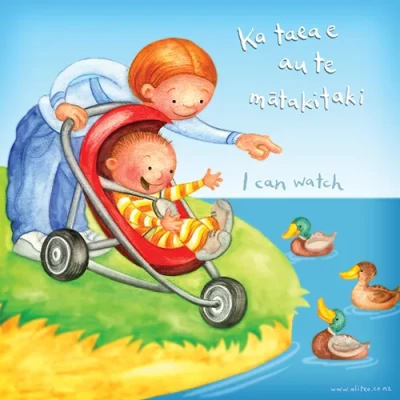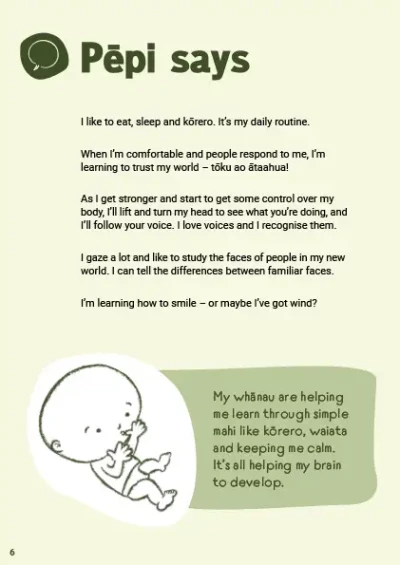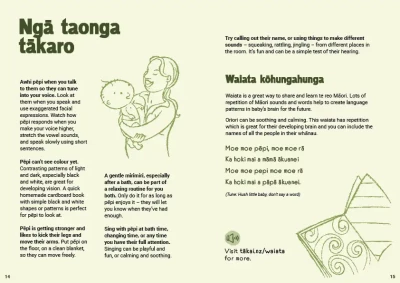
Vision
Babies see faces first, then eventually see moving objects and things in 3 dimensions. Whānau can use a variety of activities to stimulate baby.
Did you know that most of what we learn begins with what we see?
The development of baby’s vision is important, and the Well Child Tamariki Ora nurse will check at each visit to make sure everything is developing on track.
Familiar faces are the most popular
In Whakatipu Te Pihinga 1 (page 6), Pēpi says, ‘I gaze a lot and like to study the faces of people in my new world.’
In their early weeks, newborn babies prefer to look at faces – especially the eyes – over anything else.
Studies have shown that after only 3 days, a baby will seek out their own mum’s face in preference to an unknown woman.
What newborns see best
A new baby sees an object best when it's about 30 centimetres away. This is the approximate distance for a baby at the breast to concentrate on mum’s face.
Contrasting patterns of light and dark, especially black and white, are great for stimulating their vision.
A homemade cardboard book with simple black and white shapes or patterns is perfect for this and is easy to make. Te Pihinga 1 also talks about this activity on page 14.
Try an activity
Black and white book
Ask the whānau if they’d like to make their own black and white book! A low cost, high impact rauemi great for developing vision.
Babies’ vision at 2 months
By about 2 months, babies like to watch moving objects.
Ask whānau to think about what happens when they move around the room or move a toy in front of them. Does baby follow with their eyes?
Babies’ vision at 3–6 months: Combining senses
Baby can see things at different distances now, their colour vision has matured and they can see in 3D. Now that they can also reach and grasp, we’ll see their senses all working together.
First they hear a noise (say, from a rattle), then they turn their head towards it, see it, reach out, grasp the rattle and of course bring it to their mouth to find out more about it.














